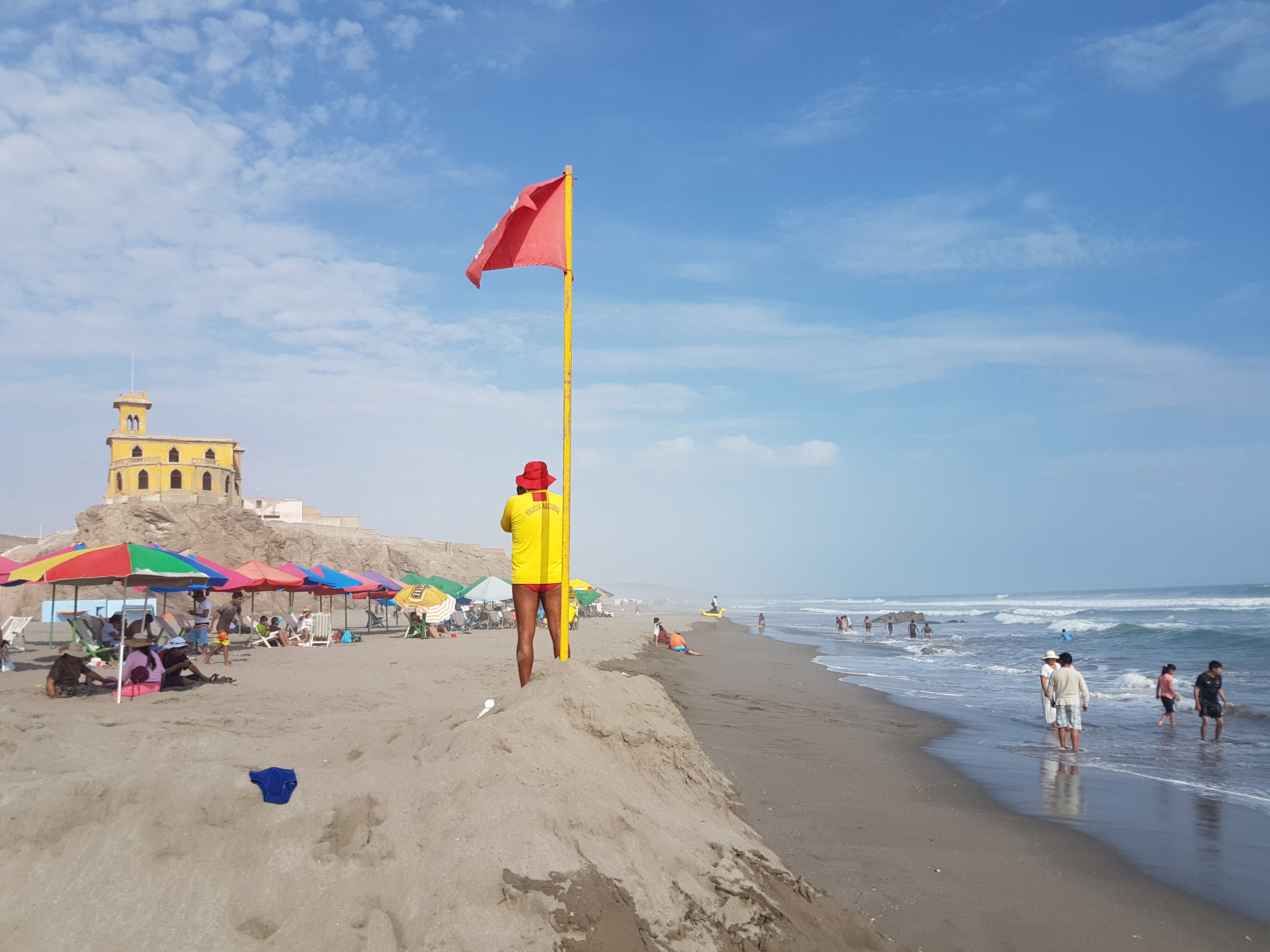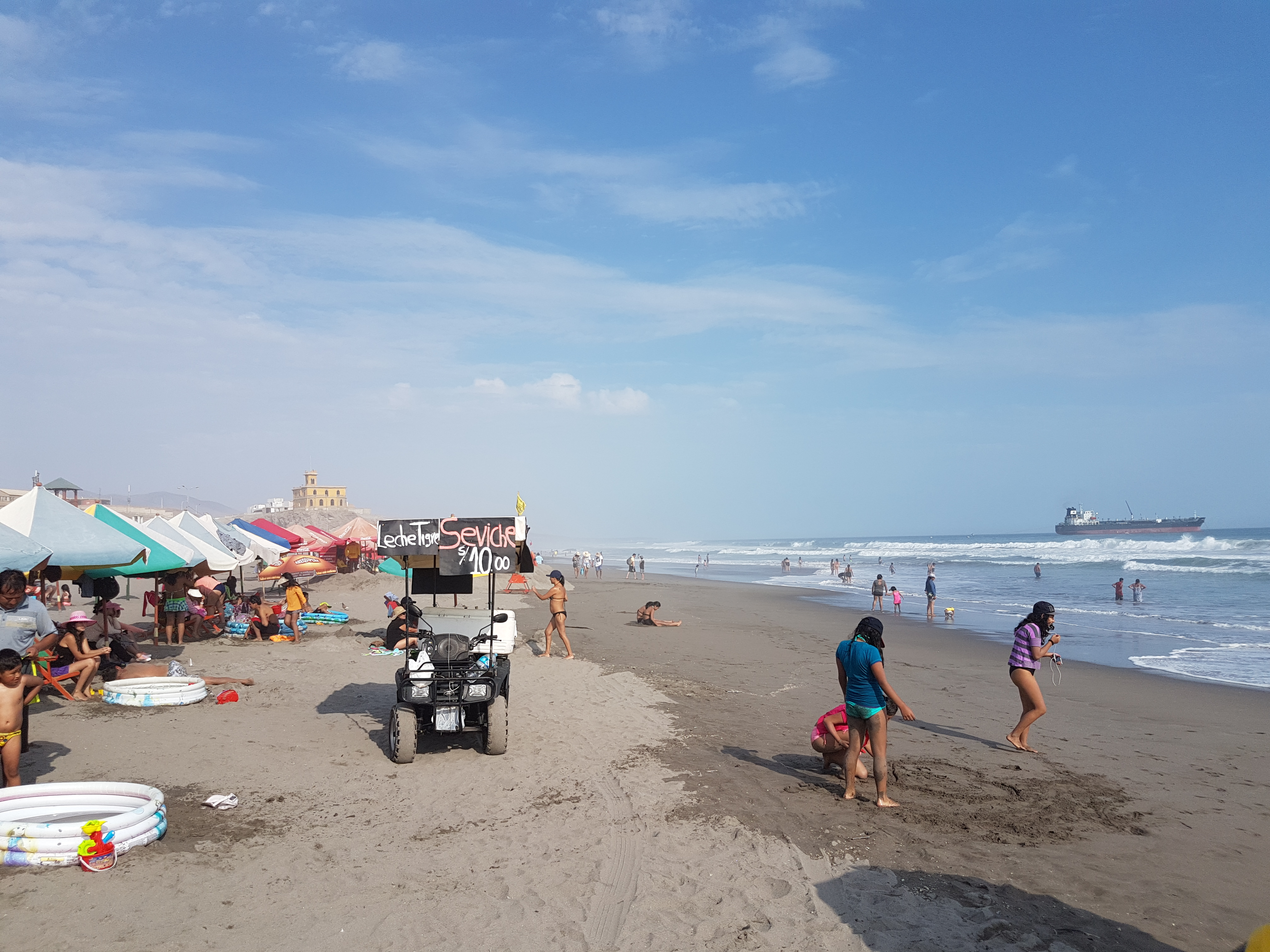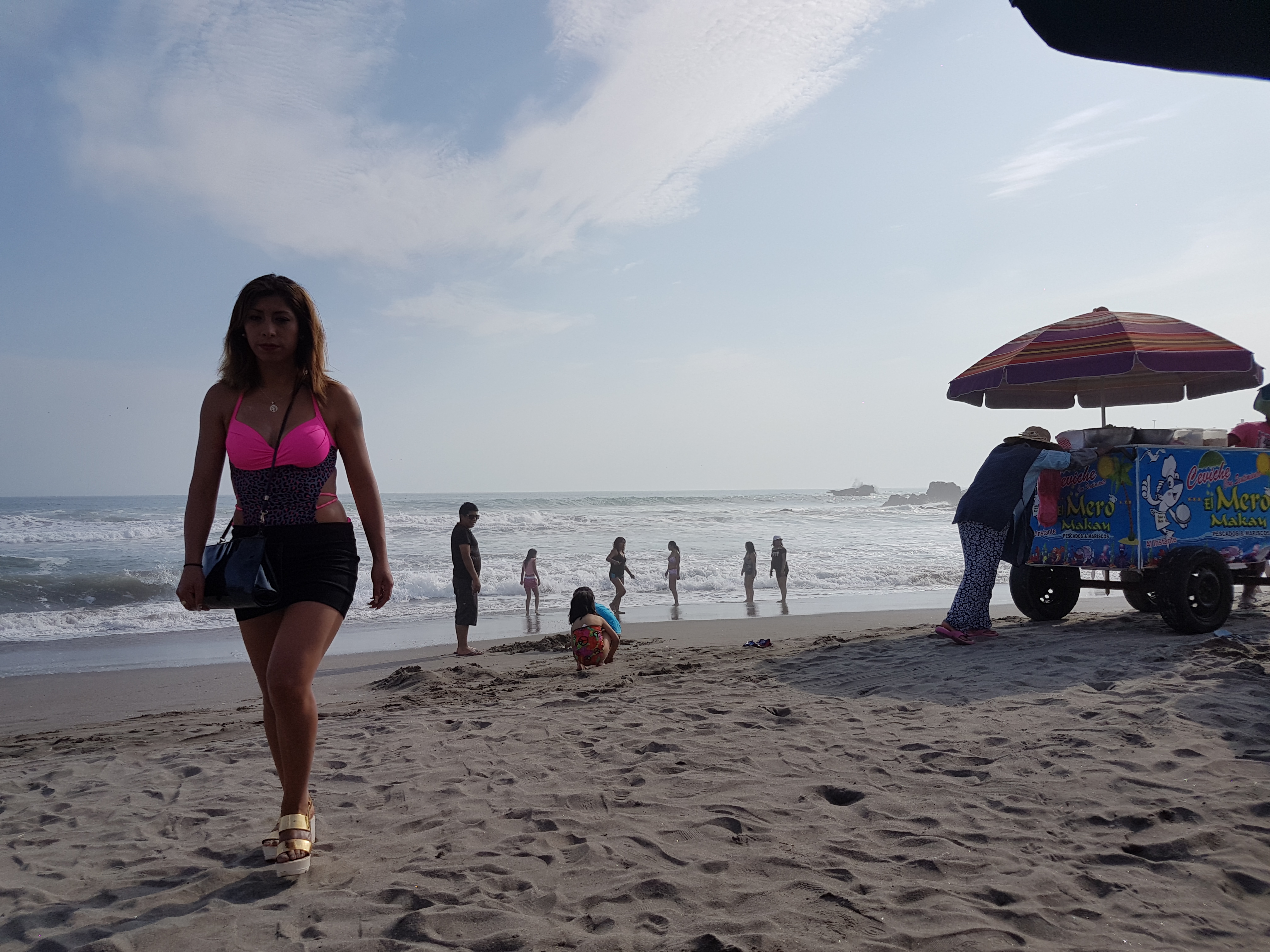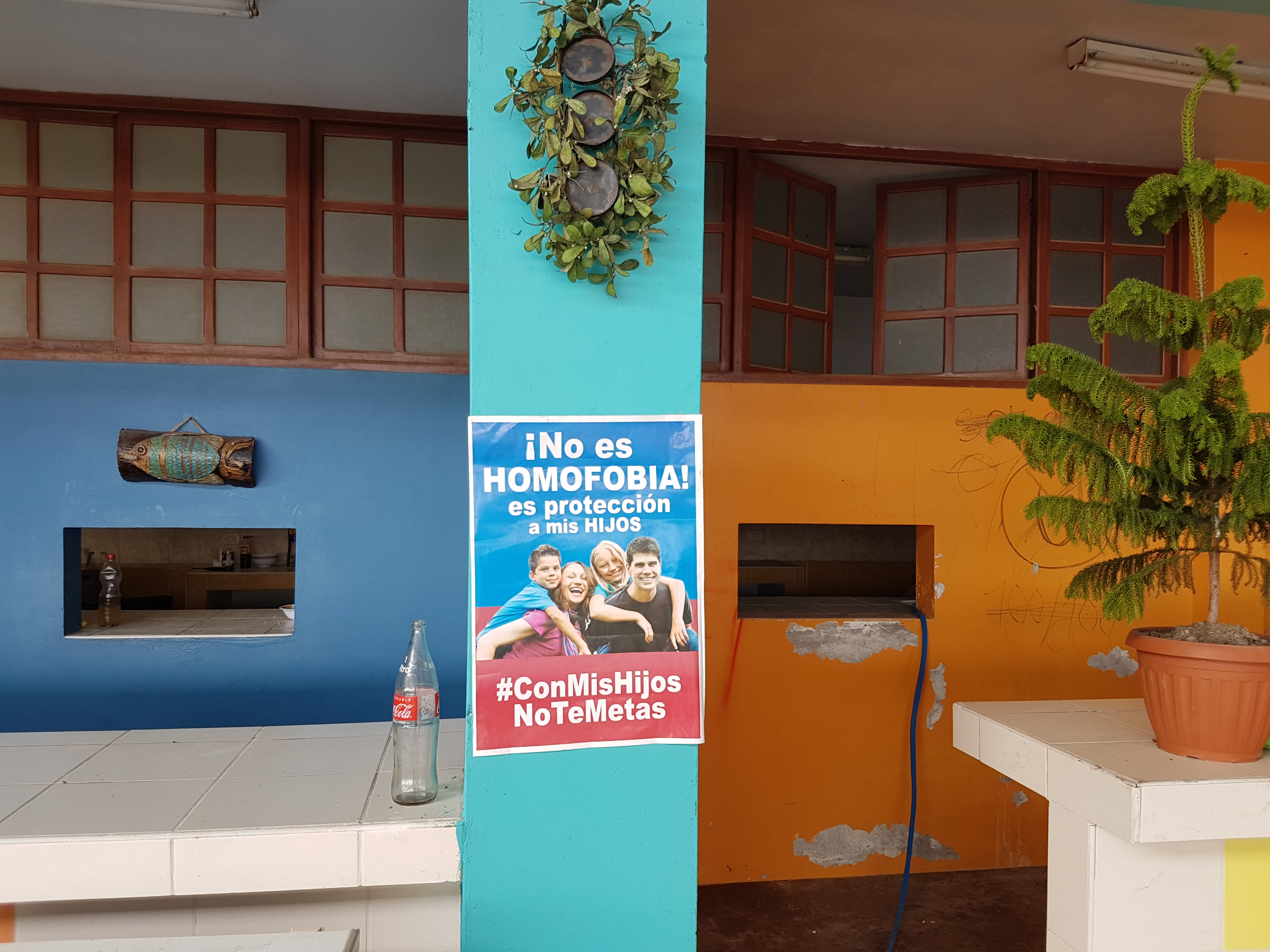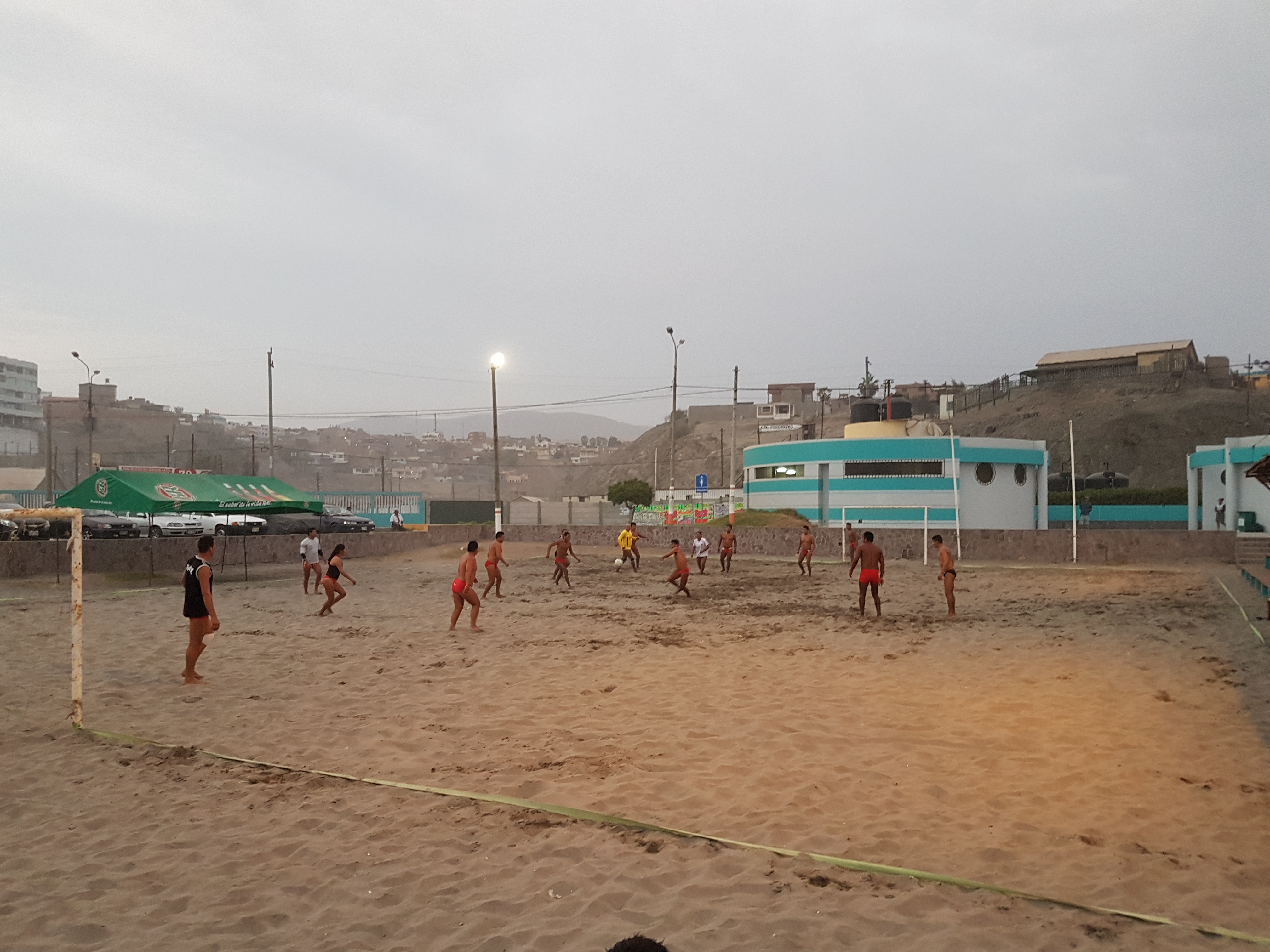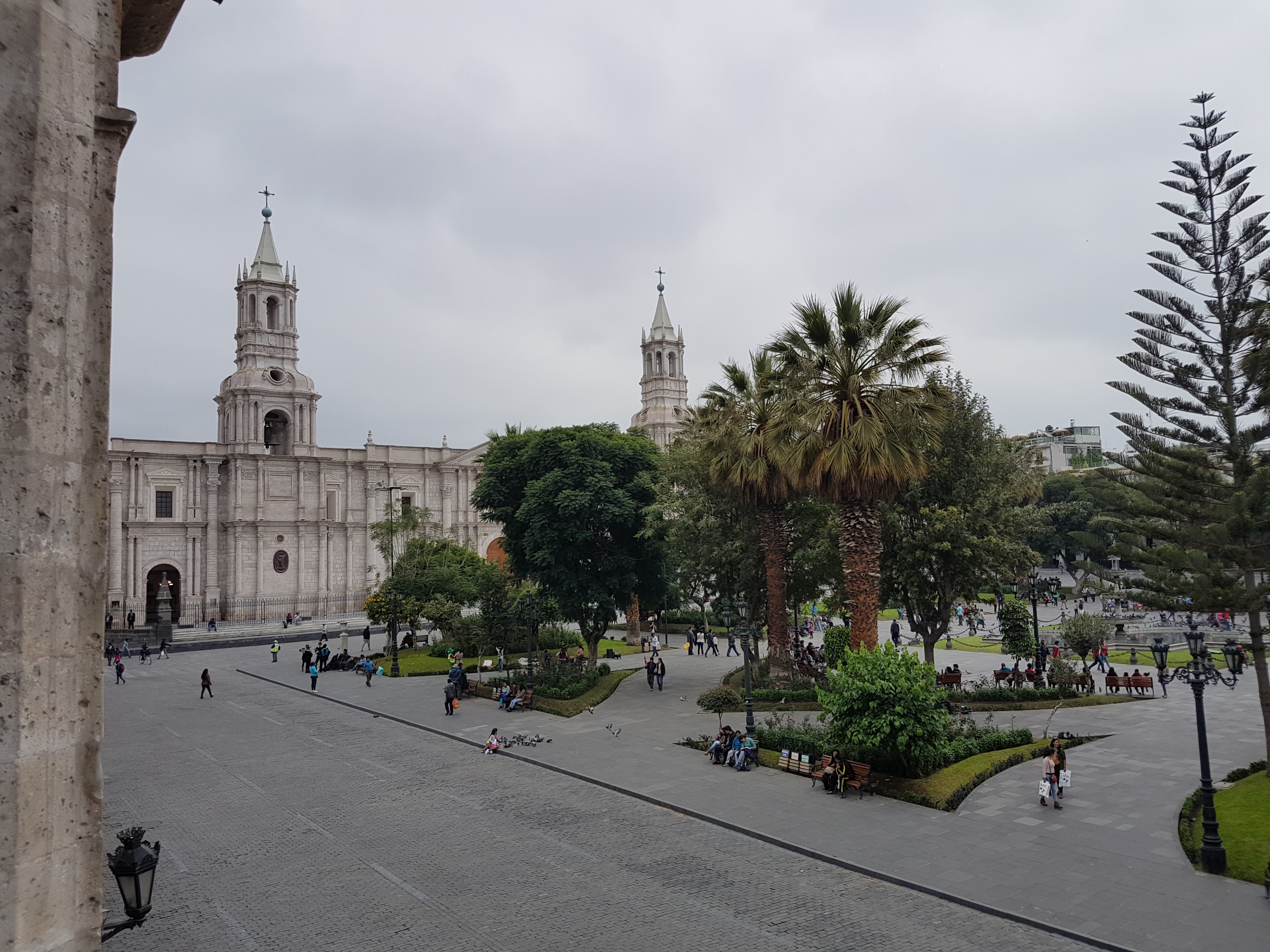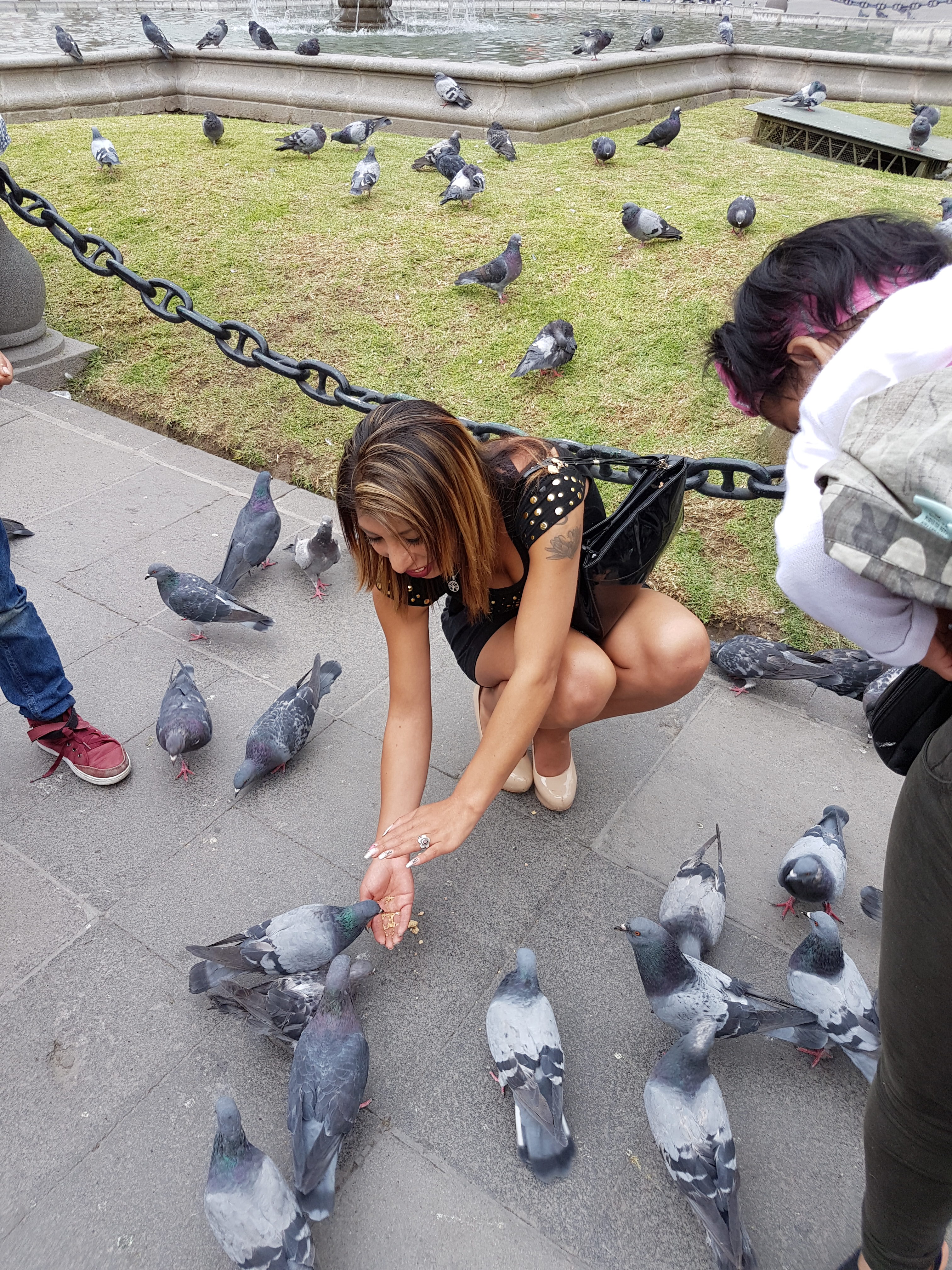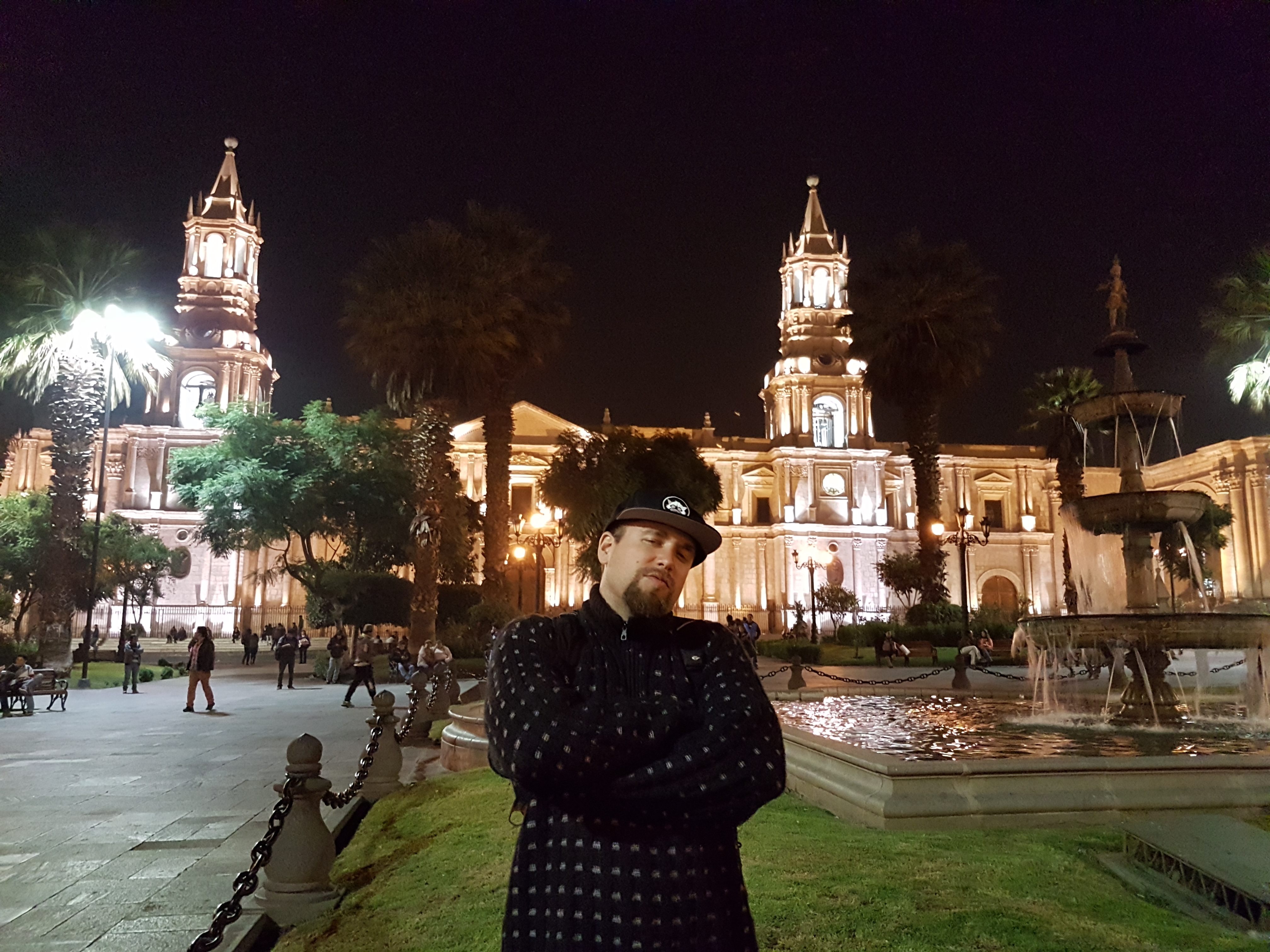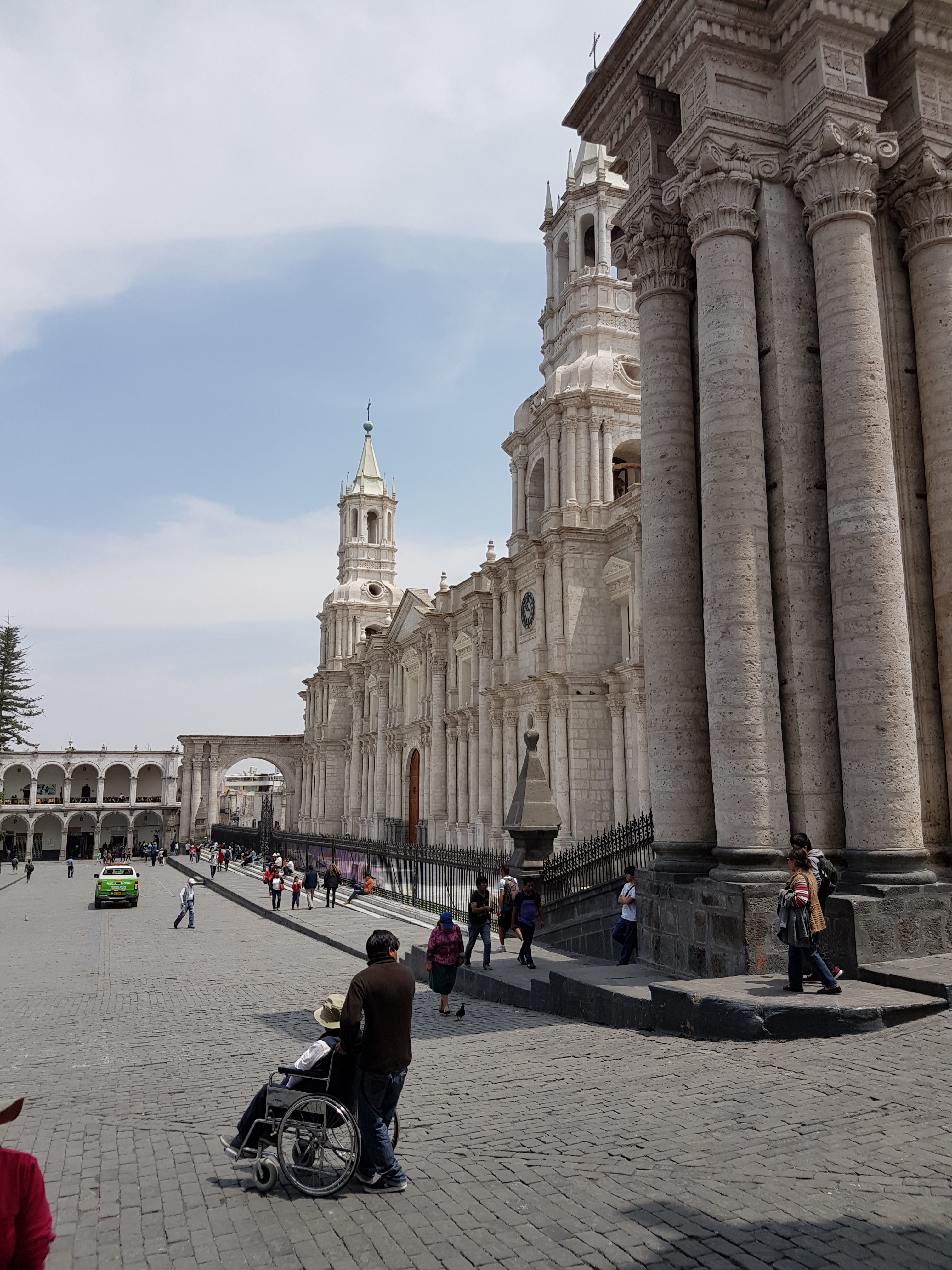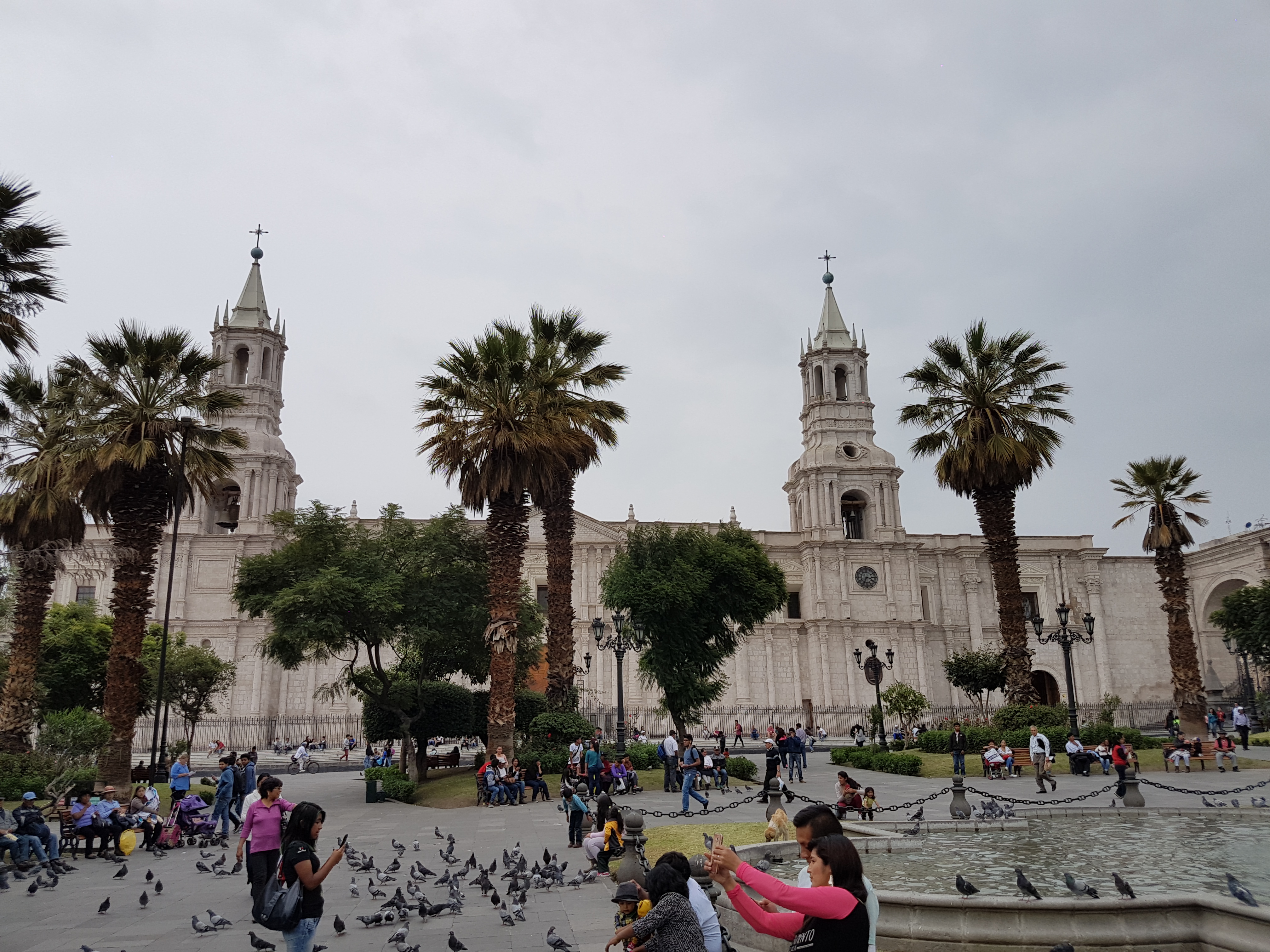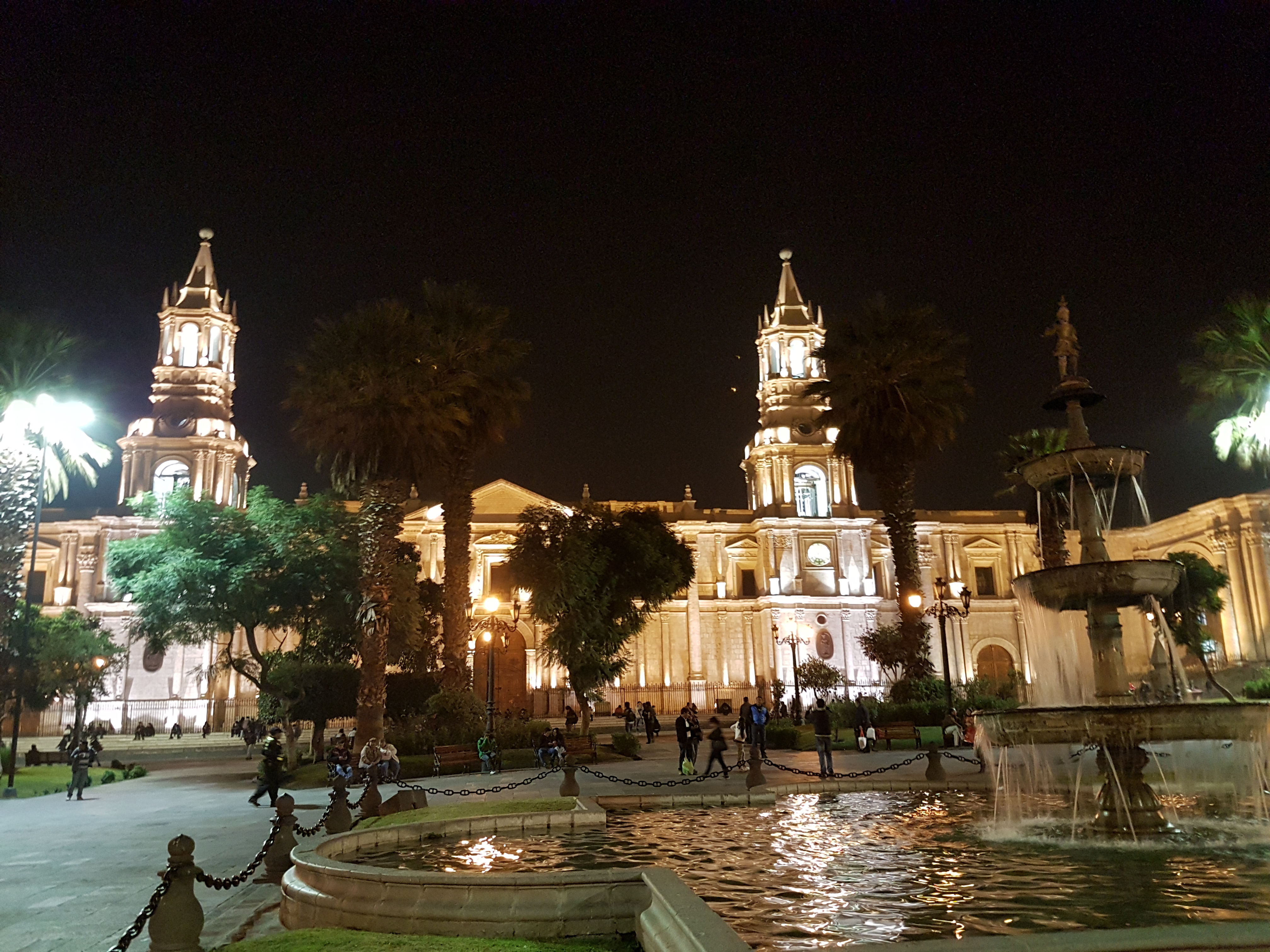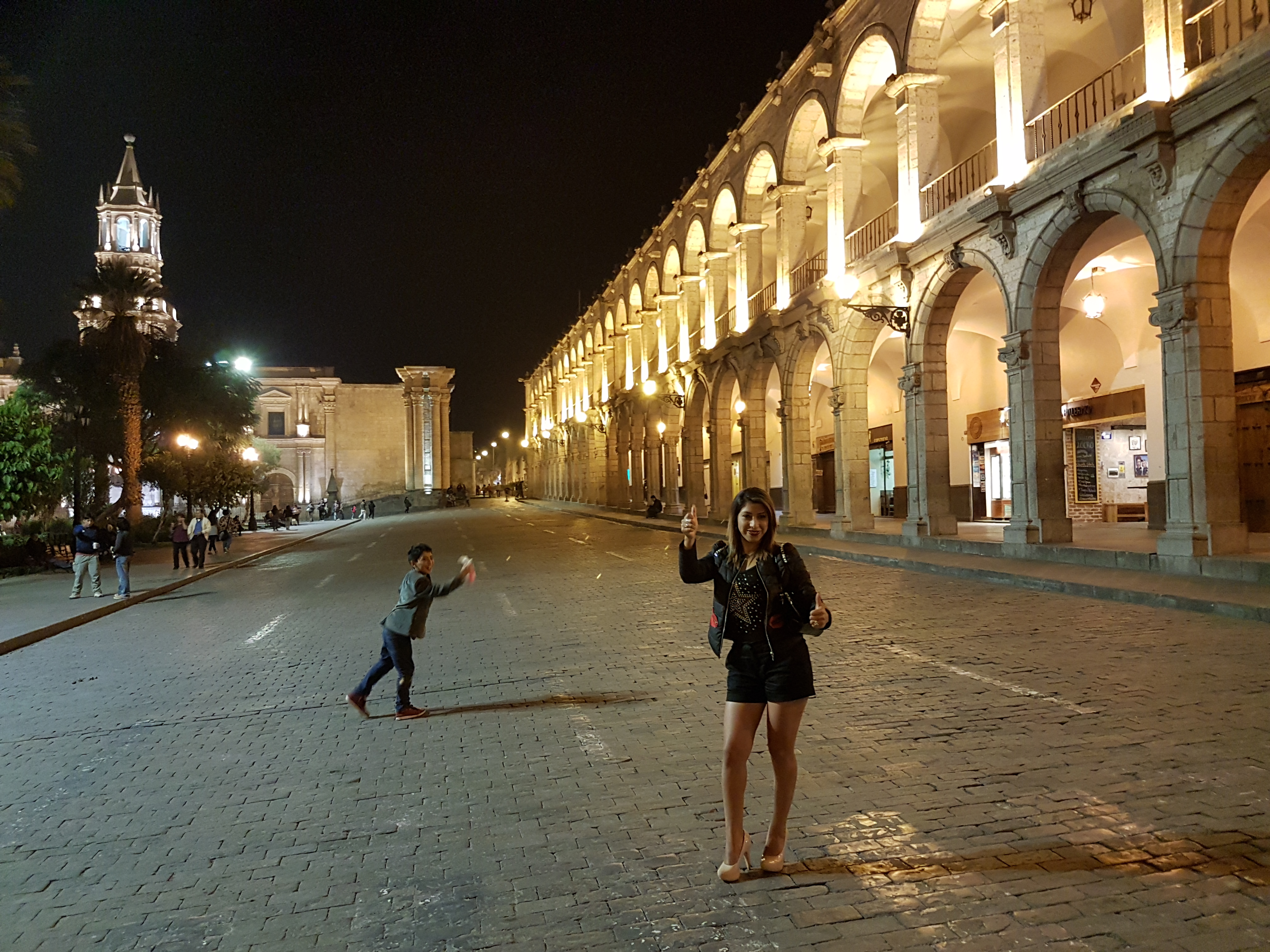Boasting a robust population that’s complimented with booming business, Arequipa is a force to be reckoned with. Thanks to its close commercial ties to Brazil, Chile and Bolivia, this is the second most industrialized city in Peru. It’s also home to over 861,145 residents, making it the second most populous Peruvian city after Lima. The Constitutional Court of Peru is based here, which isn’t surprising given that Arequipa used to be Peru’s capital. From the architecture to its history, everything about this city is incredibly unique.
Over the years, Arequipa’s Chili River Valley was home to multiple pre-Columbian cultures. What started as nomadic hunter-gatherer tribes eventually evolved into sedentary civilizations that domesticated llamas and developed agriculture. When the Yarabaya and Chimbe tribes teamed up with the Cabana and Callagua tribes, they focused on agriculture. By diverting water throughout the valley in a series of irrigation systems and terraces, they successfully domesticated the land. Their agricultural system was so intricate that it caught the eye of the Incas.
When Inca Mayta Capac arrived in the Chili River valley in 1170 AD, he immediately decided to integrate this civilization into the Inca empire. He achieved this by bringing in 3,000 settler families (mitimae) from within the existing kingdom to occupy the land. They blended in with the locals and formed the towns of Cayma, Tiabaya, Characato, Socabaya and Yanahuara that still exist within Arequipa. The Incas won over the unconquered locals by strengthening the cities borders and further developing their already impressive agriculture system. This peaceful integration lasted until the Spaniards arrived in 1540.
Ironically, Arequipa’s name stems from a simple miscommunication. When the Spaniards first arrived in the valley, they asked the local chief what the city was called while pointing at the ground. Thinking that they were asking permission to sit, the chief agreed and told them to sit in Quechua. Apparently this sounded like “Arequipa”, so the Spaniards named the valley of the Chili river “Villa de la Asunción de Nuestra Señora del Valle Hermoso de Arequipa”. While this long-winded name ended up being shortened down, Arequipa’s role in Peruvian politics was just getting started.
Interestingly enough, Arequipa was the last city in Peru to remain loyal to the Spanish crown. Due to their strategic location on silver trade routes, Arequipa was a favorable place for the conquistadores to live. This led to the city being home to a robust Spanish population, and this influence was directly reflected in their political views. When the rest of Peru rebelled against the crown, Arequipa remained loyal to Spain. This phenomenon was called fidelismo, and gave birth to many infamous defenders of the Spanish Crown. Their surprising devotion led to Arequipa getting named “Faithful” by the Royal Charter in 1805.
Despite being removed from the initial wave of Peruvian uprisings; Arequipa couldn’t escape the revolution. When the libertarian movements finally reached this remote city, Arequipa managed to temporarily remain under Spanish control. It wasn’t until the Battle of Ayacucho in 1824 that the city finally gained independence from the Spanish Crown. Even though the city was defeated, it became the birthplace for multiple political movements in Peru. Thanks to a slew of important political figures hailing from Arequipa, this city quickly became a political hub.
Arequipa was so influential that General Orbegoso moved his presidential government from Lima to Arequipa in 1835. This bold move sparked a battle for power as General Felipe Santiago Salaverry claimed to be president since Orbegoso had left Lima. To gain some much-needed support, General Orbegoso petitioned help from the Bolivian President Andrés de Santa Cruz. Their armies teamed up and confronted Salaverry’s forces in multiple battles outside Arequipa. While Salaverry won the first battle, he was eventually defeated and forced to surrender. This led to Salaverry and nine of his top officers getting publically shot in the main square of Arequipa.
Despite experiencing an abrupt end to this attempted revolution, Arequipa’s problems had just begun. Even after the National Congress was installed, the area was home to multiple uprisings. During the War of the Pacific, Chilean troops ended up occupying both Lima and Arequipa. When Peruvians finally regained control of the city, Arequipa was developed into an exportation hub. Wool and agriculture products were produced at breakneck speeds at the expense of peasants. Once Arequipa was connected to Cusco and Juliaca by the Southern railroad, there was no turning back.
Even though it lost its status as Peru’s capital, Arequipa continued evolving at an impressive rate. By 2000, the sprawling 332 hectares historic center of Arequipa was named a UNESCO World Heritage Site. This is thanks to the unique blend of European and native architecture that’s referred to as Escuela Arequipeña. While the area was damaged by a massive 8.4-magnitude earthquake in 2001, it managed to survive and continues hosting tourists.
Due to its gorgeous design and moderate climate, Arequipa remains a hotspot for tourism. Boasting over 1.78 million tourists a year, this is the third most visited region in Peru. While the neighboring valle del Colca steals the show. It isn’t the only place worth visiting around Arequipa. To shed some light on what to visit, we compiled a list of attractions around Arequipa. These areas can’t be missed, so don’t hesitate to incorporate them into your trip!
Best Places to Visit Around Arequipa
Attraction #1: Mollendo – Located about two and a half hours outside Arequipa, this sleepy beach down can’t be missed. Despite being abandoned for most of the year, this town comes alive during the Peruvian summertime. From January to March, their beach is filled with national tourists who are desperate to soak in the sunshine. After this brief period the city is constantly shrouded in fog, which leads to it looking like a ghost town. There’s no comparing between the two periods, so pick when you visit wisely.
Attraction #2: Plaza de Armas – Even though this is a no-brainer, the main plaza of Arequipa is the heart of the city’s history. This is due to the fact that it’s home to multiple cathedrals and churches that boast exquisite designs. Built completely out of volcanic rock, these cathedrals have a gorgeous white hue. From earthquakes to massive fires, their cathedrals have managed to withstand the tests of time. This plaza is also filled with pigeons, so it’s a UNESCO attraction that even Mike Tyson could enjoy. These birds add a fun touch to this historically rich center, just watch out when feeding them!


